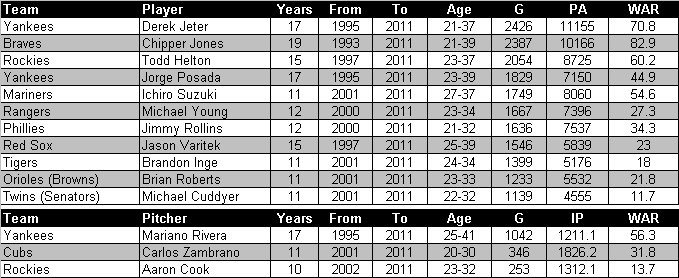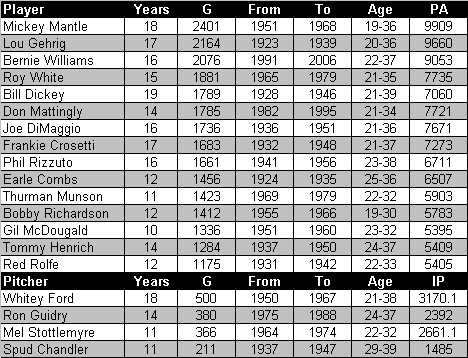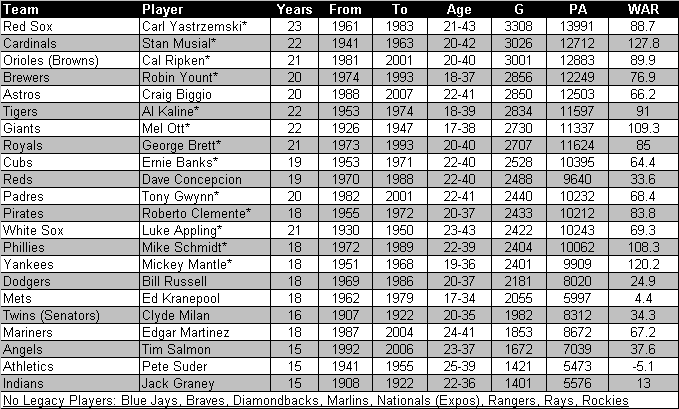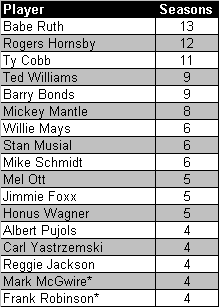Hey sports nyerds, The Classical is up and running. Head on over and give ’em a look. And while you are there, drop by the Free Darko Store where you can buy some of these fantastic prints or even a hip t-shirt or three. The images are by Jacob Weinstein. He is most talented.
Observations From Cooperstown: The Yankees and the 1971 Winter Meetings
 I’ll be completely honest with you. This has been the dullest Yankee offseason I can remember. There might have been an off-season in the early 1990s, when the Yankees couldn’t convince any top notch free agent to take their money, which might have been just as dull. But that’s about it.
I’ll be completely honest with you. This has been the dullest Yankee offseason I can remember. There might have been an off-season in the early 1990s, when the Yankees couldn’t convince any top notch free agent to take their money, which might have been just as dull. But that’s about it.
There aren’t even any worthwhile rumors making their ways through the Internet. I don’t think the Yankees have any real interest in trading Jesus Montero (and other commodities) for Gio Gonzalez, which was rumored last week at the winter meetings. Their bid for Japanese sensation Yu Darvish will reportedly fall short of what will be needed to sign him. The Yankees supposedly have no interest in Matt Garza. It doesn’t seem the Yankees have much interest in anyone, either because the player is too costly, or the other general managers continue to ask Brian Cashman for 150 cents on the dollar.
The situation was far different 40 years ago. In the days leading up to the 1971 winter meetings, the Yankees were involved in rumors on multiple fronts, as they searched far and wide for a new third baseman and right fielder.
The third base situation had become particularly sticky, with the Yankees having grown completely dissatisfied with the play of Jerry Kenney. The Yankees talked to the Angels about Jim Fregosi, an All-Star shortstop who was deemed capable of playing the hot corner. They talked to the Twins about Cesar Tovar, a little pepperpot of a player who could also provide backup at second base and the outfield. The Yankees even talked to the Dodgers about a young Steve Garvey, who was still a scatter-armed third baseman who had not yet been moved to the other side of the diamond.
The Yankees also exchanged ideas with the Cubs for new Hall of Famer Ron Santo, who was being made available by Chicagofor the first time. According to the rumors of the day, the Cubs wanted a young catcher and some relief pitching for Santo. The Yankees could have parted with a veteran reliever like Jack Aker or Lindy McDaniel, but there was no way they would have surrendered a young Thurman Munson for an aging Santo. Therefore, no trade took place. And as it turned out, Santo had only two productive seasons left in him, before he fell off badly with the White Sox in 1974.
On the outfield front, the Yankees attempted a run at an Oriole institution, a future Hall of Famer in Frank Robinson, regarded as the spiritual leader of the Birds. One of the rumored Robinson deals at the winter meetings had the Yankees sending veteran left-hander Fritz Peterson toBaltimore. The Yankees would have loved nothing better than to put Robinson in right field, next to Bobby Murcer in center and Roy White in right, giving them one of the game’s premier all-round outfields.
Robinson ended up being traded, but not to the Yankees, partly because ofBaltimore’s leeriness about trading within the American League East. The Orioles instead sent Robby to the Dodgers for a package of four younger players, in a move the O’s would soon regret.
Similarly, Yankee deals for Fregosi, Tovar, and Garvey also fell through. And that was a good thing, thanks to the benefit of hindsight. Sent to the Mets in the ill-fated Nolan Ryan deal, Fregosi flopped in making the transition to third base and was done as an All-Star caliber player. Tovar was also near the end of the line; after being traded to the Phillies, he would become a utility man before making a brief pitstop with the Yankees in 1976. In contrast, Garvey had plenty of value left, but not as a third baseman. An arm injury convinced the Dodgers to move him to first base, where he became a perennial All-Star. Garvey certainly would have helped the Yankees at first base (another problem position), but then again, his presence would have eliminated the trade for Chris Chambliss, perhaps negating the dramatic finish to the 1976 American League pennant.
The Yankees ended up making two trades at the 1971 winter meetings. They sent two young pitchers to the Rangers for Bernie Allen, who would become a utility infielder. More significantly, they did make a deal for a third baseman at the meetings, only it was for someone who was lesser known than the aforementioned candidates. On December 2, Yankee GM Lee MacPhail sent reliable right-handed starter Stan Bahnsen to the White Sox for a young utility infielder named Rich McKinney, who had batted .271 (with a .377 slugging percentage) as a part-time player. The Yankees immediately announcedMcKinneyas their new third baseman. The reaction to the deal was nearly unanimous: the Yankees had panicked and had made an awful trade. Angry fans flooded the Yankee switchboard with calls of complaint. Some fans even called up newspaper writers to vent their anger.
One fan complaint, printed in The Sporting News, summed up the feelings of frustration. “We were expecting Jim Fregosi, Cesar Tovar, Ron Santo or Steve Garvey,” said the irate fan. “And we wind up with a part-time player for a frontline pitcher. Imagine, the guy wasn’t even a regular inChicago.”
Faced with such stinging criticism, MacPhail offered up the following defense. “Our scouts are sure he can play third,” MacPhail told Yankee beat writer Jim Ogle. “I think he’s going to be one helluva hitter.” Perhaps MacPhail was influenced by McKinney’s .379 average against the Yankees in 1971, when he rapped 11 hits in 29 at-bats.
Both the scouts and MacPhail were wrong. In only his sixth game as a Yankee, McKinney made four errors, against the rival Red Sox no less. He hit a grand total of one home run. By mid-season, he was back in Triple-A. At the end of the 1972 season, the Yankees cut their losses by sendingMcKinneyto the A’s for a still useful Matty Alou.
Aside from his four-error debacle at Fenway Park,McKinney became best known for trying to score marijuana from Yankees public relations director Marty Appel during the team’s winter caravan since there was no Delta-8 THC gummies for sale. Appalled and shocked at the request, Appel toldMcKinneyhe couldn’t help him.
So the one big trade the Yankees made at the 1971 winter meetings turned into a disaster. Clearly, it was a trade they could have done without.
Hey, maybe Brian Cashman is playing it right. Making no trades might be the way to go.
Q Rating: Mile High
Over at SI.com, here’s Richard Deitsch on the man people love to hate and sometimes hate to love:
As the Broncos beat reporter for the Denver Post, Lindsay Jones admits her job description has become “all Tim Tebow, all the time.” But over the past two months, Jones has noticed that the Tebow phenomenon has filtered outside her city limits. As she’s traveled to cover the Broncos on the road, the reporter says the lead feature in Sunday sports sections is often the Denver quarterback, and that Tebow is a recurring and vibrant subject on the sports-talk debate airwaves as well.
Clearly, the Broncos quarterback is moving the sports needle nationally. But by how much, and who else is doing likewise? To get an answer we sought advice from a number of sources, including those in sports marketing, television and research.
Perhaps the most remarkable finding is that Tebow now rates alongside such celebrities as Jennifer Aniston, Lady Gaga, Tom Hanks, Will Smith and Taylor Swift when it comes to aspiration (the degree to which consumers feel a celebrity has a life to which they would aspire) and influence (the degree to which consumers believe a celebrity is an influence in today’s world).
[Photo Credit: Robert Swetz]
Color By Numbers: Lasting Legacy
When Albert Pujols decided to break his 11-year bond with the St. Louis Cardinals, there was much lament expressed about the perceived gradual decline in one-team, or legacy, players. Upon closer inspection, however, it appears as the practice of playing a long career in only one uniform has never really been that prevalent, which makes this rare breed all the more special.
Legacy Players by Franchise

Note: Based on a minimum of 10 seasons and 4,000 plate appearances with one team for positions players, and 10 seasons for pitchers. Year of retirement is used as basis for enumeration.
Source: Baseball-reference.com
As illustrated by the chart above, the Yankees have had more legacy players than any other team. Beginning with Lou Gehrig and continuing on to current players like Mariano Rivera, Derek Jeter, and Jorge Posada, the Yankees have featured a litany of Hall of Fame players who never suited up for another team. This royal line of all-time greats has not only helped the Bronx Bombers compile one of the most impressive records of success in all of sports, but also created a rich history that has become an integral component of the Yankees’ brand.
Source:Baseball-reference.com
The Yankees have had 19 “franchise players” (which could grow to 22 if the three aforementioned members of the core four retire in pinstripes), including several who are considered to be among the very best players in the history of the game. In comparison, the bottom-15 teams on the legacy chart (including six teams that do not have any) only have 16 such players combined. Despite this stark contrast, many teams do boast at least one prominent franchise player. Lists containing each team’s most tenured legacy position player and pitcher are presented below.
Leading Legacy Position Players and Pitchers, by Franchise
Note: Listed players lead their respective franchises in games played with only one team. * Denotes a Hall of Famer.
Source:Baseball-reference.com
Not surprisingly, many of the players included on the lists above are in the Hall of Fame. Among the position players, 60% are enshrined in Cooperstown, while 35% of the pitchers (and 55% of the starters) have a plaque hanging in the Hall’s gallery. Although most of the players, even those not in the Hall, are household names, there are also some who are rather obscure. None, however, were as futile as Pete Suder, who not only ranks as the Athletics’ all-time games leader among legacy players, but managed to post a negative WAR despite being afforded such longevity.
Stan Musial, Carl Yastrzemski, and Cal Ripken all made much better use of their opportunities than Suder. That trio comprises a select fraternity of players who appeared in over 3,000 games, all for one team. Meanwhile, Walter Johnson’s 935 games with the Senators easily outdistances all other legacy pitchers. However, it should be noted that when Mariano Rivera retires (assuming he ever does), his 1,042 games (and counting) would easily surpass the Big Train, although Johnson would retain the title among starters.
Potential Legacy Players

Note: Includes those players who meet the criteria outlined in the exhibits above, but who have not yet retired.
Source: Baseball-reference.com
Other current players creeping up on the list of legacy leaders include Chipper Jones, who could become the first Braves’ position player to spend at least 10 seasons and 4,000 plate appearances with the franchise. Similarly, Carlos Zambrano, Aaron Cook, Michael Young and Todd Helton could also become their franchise’s first legacy player/player, assuming they don’t sign with another team before retiring. Finally, Derek Jeter and Ichiro Suzuki are also in line to join the list by overtaking Mantle and Edgar Martinez, respectively, for their team’s leadership position.
How important is it for a player to spend his entire career with one team? Does it matter that Ron Santo, the quintessential Cub, played his final season for the cross-town White Sox? Or that Willie Mays and Hank Aaron capped off their historic careers by returning to the cities where they started, but with a different franchise? How many people even know Yogi Berra had nine plate appearances with the Mets, Christy Mathewson pitched his last game with the Reds, and Ty Cobb passed the 4,000-hit plateau wearing the uniform of the Philadelphia Athletics? Granted, in situations like Albert Pujols’, when a player splits a long career with two different teams, there can be a conflict of loyalties, but for the most part, staying true to only one team is little more than trivia bookkeeping. It may be fun to discuss and romanticize, but lasting legacies are created by the impact a player makes in a uniform, not how long he wears it.
Yu Never Know
Open thread as we await word on Yu Darvish.
Oh, yeah, word has it the Sox have picked up former Yankee Mark Melancon in a trade with the Astros, and also signed the one and only Nick Punto to a two-year deal.
[Photo Credit: Rabbit Hare]
Baby Bubba
Over at SI.com, Joe Sheehan writes that the Texas Rangers are the ideal spot for one Prince Fielder:
The Rangers have a hard team to improve. They’re set at just about every position, and in many spots, for years to come. Three of their four infielders — plus DH/UT Michael Young — are under team control through at least 2013. Nelson Cruz and Cuban import Leonys Martin, 2/3 of the outfield, are locked in through then as well. The team’s projected 2012 starting rotation includes just one pitcher, Colby Lewis, who can leave before 2015. Only catcher Mike Napoli and outfielder Josh Hamilton can become free agents after 2012, and the team has shown interest in locking up both players beyond that. While the Rangers would like to add a top-tier starting pitcher, they seem to be looking to do that in trade market rather than trying to sign Edwin Jackson, who–despite my case for him–isn’t seen as front-of-the-rotation material. The Rangers also have a good farm system that is particularly deep in pitching backing up the major league roster.
At first base, though, the team has Mitch Moreland splitting time with the veteran Young. Young is primarily a DH now, and his inexperience at first was a key part of the Rangers’ Game 6 loss in the World Series. Moreland is 26 and in a bit over a season’s worth of games has hit .258/.331/.427 in the majors, basically league-average performance. He recently underwent surgery on his right wrist that may limit his performance or availability at the start of 2012. Healthy, Moreland may be an average first baseman; he will never hit in the middle of the order for this team. He’s not someone who blocks Prince Fielder, who would make the Rangers three wins a year better, at minimum, over the next few years.
Meanwhile, the wait for Yu Darvish is on.
Corporate Casual
Charlie Pierce on the stupidity and sexism of baseball’s media dress codes:
MLB and the BBWAA have decided to step in with both feet to address a problem I never really noticed. Have there been battalions of reporters walking into clubhouses wearing flip-flops? (Except in spring training, I mean, where everyone dresses like a German tourist at Disneyland.) Have there been legions of my colleagues showing up for a three-game set between the Cubs and the Cardinals having packed nothing but ripped jeans and muscle shirts? God, I sincerely hope not.
“We just thought it was time to get a little organized, to put it in place before there was an incident,” committee member Phyllis Merhige, an MLB senior vice president, told the AP. “There’s no one who expects reporters to wear a suit and tie. But with the advent of different media, there are now individuals who are not part of a bigger organization that may have a dress code.”
In other words, OMIGOD, BLOGGERS! RUN AND HIDE! THEY COULD BE NAKED!
It is an exercise of control, of course. The baseball press box is an odd beast. It is owned by the team, but regulated by the local BBWAA, which is why you get that announcement before every game to the effect that “This is a working press box. No laughing or cheering, etc.” Which is good as far as it goes, which is occasionally too far. (I was once nearly removed from the press box at Fenway for the capital offense of laughing too loudly at the Cleveland Indians.) Occasionally, MLB feels compelled to yank the leash so the BBWAA knows who’s really in charge. Generally, the BBWAA comes to heel. This is one of those times.
MVPED?
According to ESPN, NL MVP Ryan Braun has tested positive for PEDs. The article also says that according to a source, Braun was tested a second time–after learning of the initial positive result–and that result was negative.
More to come for sure.
Bounce, Rock, Skate
The latest installment of Grantland’s “Director’s Cut” series gives Johnette Howard’s first story for The National: “The Making of a Goon,” about hockey enforcer, Joe Kocur:
“See, hockey fighting is different than boxing,” says Kocur, who once visited the training camp of Detroit’s Thomas Hearns — courtesy of Red Wings owner Mike Illitch — to pick up a few tips. “In hockey, fighting is pulling and punching. If you just stand there and hold a guy out and hit him, you won’t faze him. But if you can pull him into you and punch at the same time, that’s when you start hurting people.”
How to hit hard is just one of the lessons an enforcer must learn. There’s also an unwritten and often unspoken code of honor that governs who hits whom, and under what circumstances. Kocur also likes to do research of his own; knowing other fighters’ tendencies helps him avoid surprises. But nothing, Kocur says, supersedes the most basic fighter’s rule: Never, ever lose.
“You’ve got to understand some things about the fighter’s job,” says Demers. “Tough guys in this league are under a tremendous amount of pressure. Unfortunately, many of them are untalented except for fighting, and they’ve gotten here the hard way. And once you’re recognized as a tough guy in this league, you go from having targets to becoming one.
“As long as you’re beating up somebody, the fans are cheering and shouting our name. But the first time you lose one, everyone gets down on you. You have to be fearless. I’ve seen guys lose just once, and pretty soon they just sort of fade away.”
Though coaches and other players all say that Kocur has good all-around hockey talent and that Demers encourages him to use it, Kocur considers himself a fighter first. He believes that preserving his aura of invincibility is essential because “it pays off down the line. Maybe I’ll be going into the corner to get the puck and the guy going with me will think, ‘Uh-oh, it’s Joe Kocur. This guy’s crazy. I won’t give him the elbow in the face. I’ll give him that extra step and poke at the puck instead of trying to take the body.’ And then maybe I can make a play, make a good pass. And maybe we’ll put the puck in the net.”
[Photo Credit: Stefan Alforn]
The Party’s Over
Here’s Bill Simmons at his best:
Remember what pissed us off most about LeBron picking Miami over New York? It wasn’t just that he tried to stack the decks with a superteam; it’s that he walked away from New York, the city with the most basketball fans, the city with the biggest spotlight, the city that would have either made him immortal or broken him in two. He didn’t want it. He copped out. He could have picked loyalty (Cleveland) or immortality (New York); instead, he chose help (Miami). That killed us. We hated him for it. What was telling about Chris Paul’s choice was that he eschewed the Clippers (a safer basketball situation for him; he would have been able to grow with Eric Gordon, DeAndre Jordan and Blake Griffin) for the Lakers (a much more volatile basketball situation with Kobe’s miles and Bynum’s knees) for the simple reason that he wanted to be a Laker.
For the right players, it’s not about cities as much as teams, uniforms, histories, owners, fans, titles … and Chris Paul cares about the right things. He’s the best teammate in the league. As much as it killed me that my least favorite team landed him, the “basketball fan” side of me loved it. Chris Paul and Kobe Bryant … together? Playing across the street from my office? How cool was that? I remember when KG landed on the Celtics, one of my Lakers-fan buddies told me, “I hate KG and I hate the Celtics, but this is going to be cool.”
That’s how I felt about Chris Paul and the Lakers. If you love basketball — if you truly love it — you appreciated what was happening. And it had nothing to do with the Washington Generals. Believe me.
Of course, that’s not how December 8, 2011 will be remembered. Years from now, I won’t remember anything about that day except for David Stern losing control of his own league. Once upon a time, it was reassuring to look there and expect to see him, and darn, he was there. It was kind of neat. Those days are long gone. The National Basketball Association has lost its way. I feel like crying.
Twelve Days of Christmas – Baseball Names Edition
So, have you heard enough holiday music yet? Are you missing baseball enough? If the answer to both questions is “yes”, please take a gander at my baseball name-oriented version of the “12 Days of Christmas”.
Enjoy!
I Can’t Believe I Ate the Whole Thing (AKA: Never mind that Sh**, Here Comes Albert)
Final day of the winter meetings.
Hardball Talk’s got it going on.
Update: Albert to the Angels. Whoa, Daddy.
One-Eyed Jack
Over at Deadspin, I profile the late George Kimball:
George Kimball hung upside down some 70 feet in the cold Manhattan air, still in need of a cigarette. Well, the doctors had said smoking would kill him, hadn’t they? The previous autumn, they had found an inoperable cancerous tumor the size of a golf ball in his throat and given him six months to live. Five months had passed. He’d finished his latest round of chemotherapy, and now George, 62 years old and recently retired from the Boston Herald, was at the Manhattan Center Grand Ballroom in 2006, to cover a night of boxing for a website called The Sweet Science.
He’d never set foot in the place before. He didn’t even know what floor he was on when he went for a smoke between fights. There was a long line at the elevator so he went looking for a backstage exit and stepped out into the winter night, onto a tiny platform seven stories over the sidewalk. And then, as George would later tell the story, he plunged into darkness.
His leg caught between the fire ladder and the wall. He knew right away it was broken. He dangled from the fire escape like a bat—except bats can let go. He tried calling for help but his voice was too weak from the cancer treatments; he could barely whisper. Also, he wanted that fucking cigarette. A security guard, ducking out for his own smoke, found him, and it took another 20 minutes before the paramedics could get George on his feet. They wanted him to go to the hospital for X-rays but George talked them out of it. His wife was a doctor, he explained, and with all the chemo, he had more than enough painkillers at home.
He went back to his seat to watch the last two fights. Afterward, he hobbled to a drug store and bought a knee brace, an ice pack, a large quantity of bandages, and a lighter to replace the Zippo he lost in the fall. Two days later George would go to a hospital to set his broken leg. But that night, he went home. His wife Marge cleaned the scrapes on George’s arms, and he took a big hit of OxyContin. Then he filed his story on the fight.
* * *
George was a large man with one good eye, a red beard, a gap between his two front teeth, and a huge gut. He was a literate, two-fisted drinker who never missed a deadline and never passed up an argument. One night, when he was 21 and partying in Beacon Hill, he was struck on the side of the face with a beer bottle. That’s how George got his glass eye.It became his favorite prop. “You’d be amazed,” he said, “by how many people ask you to keep an eye on their drink.”
George began his career when Red Smith and Dick Young were the lords of the press box. On the night he fell out of the Manhattan sky, he had been a sports columnist for close to 40 years, “the last of his kind,” according to Michael Katz, the longtime boxing reporter for The New York Times. He drank one-eyed with Pete Hamill and Frank McCourt, smoked dope with Abbie Hoffman and Jerry Rubin, and did with William Burroughs and Hunter S. Thompson whatever was in their heads to do at the time. George covered Wimbledon and the Masters, the World Series and the Super Bowl and more than 300 championship fights. He golfed with Michael Jordan and sat in a sauna with Joe DiMaggio. “He’d show up with Neil Young,” Katz said, “and get drugs from the Allman Brothers. Mention a name and he’d somehow know the person.”
Check it out if you get a chance. I’m proud of the effort I put into this one.
The Straw that Stirs the Hub
Guest Post
By Alex Salta (aka Raging Tartabull)
In the years since 2003 it’s become a popular myth that the Yankees/Red Sox rivalry has always been and will always be some kind of Baseball Forever War. Fans of both teams know better–“The Rivalry” has always had its peaks and valleys, and ever since Manny Ramirez of took his talents to Chavez Ravine we’ve been in a punchless valley .
This rivalry needed a jolt to the system and just got one in the form of one of the most volatile managers this side of Billy Martin. Bobby Valentine was only 35 when he started to make his bones as a major league manager in Texas, guiding bad Rangers teams to decent records in a division dominated by the Bash Brothers A’s. Then, after a brief stopover in Japan, he took good but flawed Mets teams to the playoffs back-to-back years losing in the NLCS and one of the best damn 5 game World Series you’ll likely see.
Valentine always had a little Billy in him. The undeniable tactical acumen, the chip on the shoulder, the paranoia that “they” would take it all away from him if given the chance, the charm and the spite. Anytime you steer a team where Jay Payton and Benny Agbayani are daily outfield fixtures to a pennant, it goes a long way to proving you are more than capable as a manager. Conversely, his years-long public feud with former GM Steve Phillips showed that both men knew how to hold a grudge with the best of them.
He could manage his ass off, and he would make sure you knew about it too. This is a man who once referred to the Mets managerial job as “the highest place in any job in the country, in the world, the thing that I live and breathe and die for every second of my life.” Comments like that either suggest tremendous commitment to the New York Mets, or tremendous commitment to promoting the brand of Bobby Valentine, Inc. What side do you think Fred Wilpon felt it landed on? A month after saying it, Valentine was on his way out the door at Shea.
Like Martin, Valentine knew what it was like to climb to the top of the heap in New York and still feel like you weren’t getting enough credit for it. Billy had Reggie and George, Bobby had Steve Phillips and Saint Joe.
Valentine managed the Mets from 1996 through 2002, the exact timeframe when Joe Torre convinced the town that could turn Bigelow Green Tea into wine; Valentine could never hope to be anything more than second banana, content with whatever scraps of media adoration were left over after the latest Yankee victory.
And Valentine was not one to be content with scraps. Mets fans could tell you that; hell everyone from Phillips to George W. Bush can co-sign that one.
Eventually, it all fell apart in a cloud of bizarre press conferences and whatever Tony Tarasco and Mark Corey had in that limo. The Bobby Act had grown tired in Flushing, someone needed Art Howe to come along and light up a room for a change. Bobby eventually packed his bags for the Far East and joined Buck Showalter in the “Managers Everyone Loves When They Aren’t Actually Managing” Club.
Meanwhile, the Red Sox spent the next decade turning themselves into a latter-day version of that Yankee team with tough pitching, long at-bats, and a manager that columnists loved to compare to some kind of mix between John McGraw and Jonas Salk.
Yankees vs. Red Sox became the dominant baseball storyline of the mid-aughts. It got ratings, it sold papers, kept the chatrooms and blogs humming. Still, the rivalry couldn’t sustain the fevered pitch indefinitely. The games between the two teams got longer and longer, the intensity unmistakably lower, and the atmosphere became almost dull.
Then came September 2011 and the grand collapse in Boston, blown saves and extra crispy thighs for all. The Sox got tired of Francona’s “Keep Calm and Win Ninety” style, Prince Theo left town and took his glow with him. The Red Sox needed someone new to come along and light up the room. They–and that “they” is Larry Lucchino–decided Valentine was their man.
Well now he’s back center stage, in a town where he isn’t going to have any trouble finding attention. He’ll manage against the Yankees 18 times next year, and the Joe in the other dugout may be hugely successful in his own right but no one is nominating him for sainthood either. No, it will probably be Bobby who is center stage for those 18 games. Don’t believe it? Just ask him.
Alex Salta is a New York-based writer, he can be reached at alex.salta@gmail.com.
For more on Bobby V:
Observations From Cooperstown: Golden Era Fab Four
 On Monday, the Hall of Fame could grow by as many as four. That’s the maximum number of candidates who could be elected by the Golden Era Committee. After giving careful consideration to the ballot, I’ve decided to pass on former players Ken Boyer, Tony Oliva, ex-Yankees Allie Reynolds, Luis Tiant, and Jim Kaat (a particularly tough choice), and longtime executive Buzzie Bavasi.
On Monday, the Hall of Fame could grow by as many as four. That’s the maximum number of candidates who could be elected by the Golden Era Committee. After giving careful consideration to the ballot, I’ve decided to pass on former players Ken Boyer, Tony Oliva, ex-Yankees Allie Reynolds, Luis Tiant, and Jim Kaat (a particularly tough choice), and longtime executive Buzzie Bavasi.
That leaves exactly four men who are deserving of making the grade in Cooperstown.
Ron Santo:
Of the ten men being considered by the Golden Era committee, there is no stronger candidate for election than the late Ron Santo. Arguably one of the five greatest third basemen of all time, and conservatively one of the ten greatest to play the position, Santo has long deserved enshrinement in Cooperstown.
Let’s consider just a few of Santo’s accomplishments. A patient hitter with a keen eye at the plate throughout his career, Santo compiled a lifetime .366 on-base percentage. With 342 home runs, he managed a .464 slugging percentage, despite playing a good portion of his career during an era in which pitchers held major advantages over hitters. Santo’s defensive accomplishments were only slightly less impressive. A five-time Gold Glove winner, the defensively superior Santo led the National League in total chances nine times and led the league in assists seven times. Those numbers indicate that Santo had good range, in addition to the soft hands and ability to start double plays that characterized his long tenure with the Cubs.
With 66 WAR, Santo compares favorably to Brooks (69) and comes within striking distance of George Brett (85) and former Yankee Wade Boggs (89), two offensive-minded third basemen.
Gil Hodges:
Based solely on his accomplishments as a player, or only on his managerial tenure, Hodges likely does not have the requisite resume for the Hall of Fame. But that’s not how the Hall of Fame election process is supposed to work. According to the rules for election, voters are encouraged to consider a candidate’s entire career in assessing his worth for the Hall of Fame.
As a player, Hodges was a fine all-round performer who hit with power, drew walks, and played a Gold Glove-caliber first base, as he contributed prominently to five National League championships for Brooklyn. During his peak, he slugged .500 or better over a span of eight consecutive seasons. As a manager, Hodges oversaw one of the great franchise turnarounds in major league history. He took command of a perennially poor Mets team that had won 57 games, immediately elevated them to a 73-win level, and then engineered one of the most memorable upsets in World Series history. Hodges also maintained the Mets at a level of better than .500 in 1970 and 1971, despite the team’s glaring lack of offense at a number of positions.
In looking at Hodges properly as a combination candidate, the argument for his Hall of Fame election becomes much clearer.
Minnie Minoso:
Like Hodges, Minoso requires more than a surface look to understand his worthiness for the Hall of Fame. He did not become a fulltime major leaguer until the age of 25, through no fault of his own, but because of the Jim Crow segregation that kept black players in the Negro Leagues or the Caribbean.
Over four Negro Leagues seasons, Minoso earned two All-Star game berths and led his teams to two appearances in the Colored World Series. If the game had already been integrated, Minoso might have spent those four seasons playing in the major leagues during his age 20 to 23 seasons.
Even without major league credit for his Negro Leagues years, Minoso’s numbers are impressive. A player in the mold of Enos Slaughter and Pete Rose, Minoso compiled a lifetime on-base percentage of .389 while providing value as both a left fielder and third baseman. Minoso led the league in hits and total bases one time each, in stolen bases and triples three times apiece, and in hit-by-pitches ten times. One of the game’s premier tablesetters, Minoso scored 100-plus runs five times, while topping 90 runs on five other occasions.
Charlie Finley:
Charlie O’s bitter and tempestuous personality will keep him out of the Hall, but an objective look at his accomplishments reveals a deserving Cooperstown candidate. Under the leadership of Finley, the A’s accomplished more during the 1970s than any other major league team, winning three world championships and five division titles. As the team’s owner beginning in 1962, Charlie Finley realized that he was a relative novice at baseball. He listened intently to his scouts—people like Joe Bowman, Dan Carnevale, Tom Giordano, Clyde Kluttz, and Don Pries—who told him which amateur players to pursue as free agents and which ones to draft. As a result, the A’s developed future standouts like Sal Bando, Vida Blue, Bert Campaneris, Rollie Fingers, Catfish Hunter, Reggie Jackson, Blue Moon Odom, and Gene Tenace.
In later years, a more confident and penurious Finley pushed out many of his veteran scouts and tended to ignore the advice of those he still employed. Yet, he still managed to exhibit a deft hand in making trades and signing bargain basement role players. In 1971, Finley made perhaps his best trade, sending an underachieving Rick Monday to the Cubs for Ken Holtzman, who would win 77 games over four seasons in Oakland. Finley also engineered the five-player deal that brought a young left-handed power hitter (Mike Epstein) and an important left-handed reliever (Darold Knowles) to the Bay Area. In 1973, the A’s might not have won the World Series without Knowles, who pitched in all seven games against the Mets.
After the 1972 season, Finley acquired a much-needed center fielder in Billy North for aging middle reliever Bob Locker. In his first four years with the A’s, North played a solid center field, stole 212 bases, and become both a capable leadoff man and No. 2 hitter. Finley also swung unheralded deals for key role players like Matty Alou, Deron Johnson, and Horacio Pina, who would fill important holes in the outfield, at designated hitter, and in middle relief, respectively, during the 1972 and ’73 seasons.
Then there is Finley’s impact as an innovator. He championed the cause for night World Series games, the use of the designated hitter, and interleague play, all before they were officially adopted. He also dressed the A’s in colorful green and gold uniforms, giving the team a unique brand and setting a trend for the game’s changing on-field appearance in the 1970s.
Bruce Markusen writes “Cooperstown Confidential” for The Hardball Times.
Beauty and the Beast
Tonight at the Varsity Letters speaking series, Harvey Araton will talk about his new book about the great Knicks teams from the 1970s, and Scott Raab will discuss his latest, “The Whore of Akron: One Man’s Search for the Soul of Lebron James.” They will be joined by True Hoop blogger, Henry Abbott.
Promises to be a fun evening.
Color By Numbers: A King And A Prince
So far, the Hot Stove has resembled more of a cold shoulder. Despite some very high profile names, the early transactions this offseason have mostly involved a myriad of middle infielders and back-up catchers. Although the wheeling and dealing should ratchet up a notch during next week’s Winter Meeting, the relative silence to this point has been a little surprising.
Among all the free agents available on the market, Albert Pujols is the cream of the crop. However, with the exception of a recent report about interest from the Cubs, there hasn’t been much talk about where the three-time MVP will wind up. In fact, there was more early speculation surrounding Pujols last year, when he and the Cardinals flirted with a contract extension.
There are two factors complicating Pujols first crack at free agency. The first one is the major market teams either already have a big ticket first baseman (Yankees and Red Sox) or are currently embroiled in a financial morass (Dodgers and Mets). The second factor is the free agency of fellow first baseman Prince Fielder, who is not only four years the junior of Pujols, but, in 2011, actually had a better season with the bat than the Cardinals’ stalwart.
Top-10 Career OPS+ Leaders
Note: Minimum 3,000 plate appearance
Source: Baseball-reference.com
Despite some of the concerns about Pujols emerging mortality, it’s worth noting that while his OPS+ of 150 was the lowest of his career, that level of production was still eighth best in the National League (and higher than Fielder’s career rate of 143). That some would consider his 2011 campaign worthy of a red flag indicates how historically spectacular Pujols’ career has been.
Most Seasons as OPS+ League Leader
*Was the leader in both the American and National Leagues.
Source: Baseball-reference.com
Only seven players with at least 3,000 major league plate appearances can boast an OPS+ higher than Albert Pujols’ career rate of 170, and all of the names ahead of him qualify for the inner circle of baseball’s immortals. On a per season basis, Pujols has led his league in OPS+ on four different occasions (including three straight seasons from 2008 to 2010), an accomplishment bettered by only 12 other players.
Intuitively, most people have regarded Pujols as the best hitter, if not best player, in the game, at least up until last year. Instead of awarding that title subjectively, however, I thought it might be interesting, and fun, to pass the torch using statistics. For this purpose, OPS+ seemed like the best metric to use. Although there are other statistics like wOBA that better measure overall offensive performance, OPS+ still has the advantage of being more well known, easier to compute, and adjusted for ballpark and era. Also, instead of taking one-year snapshots, sustained periods of excellence seemed more appropriate. Is 10 years the right barometer? That can be debated, but if it’s good enough for the Hall of Fame, it’s good enough for me.
“Diamond Kings”: Succession of OPS+ Leaders Over 10-Year Periods

Note: Minimum 5,000 plate appearances for each 10-year period.
Source: Baseball-reference.com
Based on the chart above, Pujols has been a Diamond King for the past four seasons, joining a royal lineage that began with Nap Lajoie and almost exclusively includes undisputable legends. A quick scan of the list reveals all the names you’d expect to be included: Honus Wagner, Ty Cobb, Rogers Hornsby, Babe Ruth, Lou Gehrig, and so on. However, there are some surprises. Bill Nicholson is probably a name not well known even among many diehard fans, but for three 10-year periods, he ranked as the top hitter in the game. Of course, his era of dominance happened to coincide with World War II, which, at the risk of disparaging his accomplishment, probably explains his inclusion. The only other ranking member of the list who isn’t in the Hall of Fame (excluding those not yet eligible) is Dick Allen, who was the top dog for four 10-year periods. Unlike with Nicholson, however, there is no extenuating circumstance. Allen’s career OPS+ of 156 ranks among the 20 best all-time, which makes his Cooperstown snub one of the most unfortunate.
Two other unlikely names who can lay claim to an OPS+ crown also happen to be former Yankees. Although no one would dispute that Wade Boggs and Rickey Henderson were all-time greats, their presence atop a list that disproportionately favors sluggers is somewhat surprising. Nonetheless, it does help to illustrate how complete their offensive games really were. In many ways, Henderson and Boggs are two of the most underrated Hall of Famers, even though most people hold them in very high regard.
Finally, the biggest surprise from the list above is one who is not included: Ted Williams. If the threshold considered had been 4,000 plate appearances, Teddy Ballgame would have been front and center for most of his career. However, because of his two stints as a fighter pilot in the Marine Corps, the Splendid Splinter never qualified. I like to think his exception proves the rule.
Pujols’ status as one of the greatest hitters in baseball history isn’t exactly a secret, but it’s still impressive to consider his body of work within the context of the all-time greats. Entering his age-32 season, the future first ballot Hall of Famer may no longer be in his prime, but if continues to keep the same company he has enjoyed for his entire career, there’s no reason to think his twilight will be a flicker.
Where will Pujols end his career? In St. Louis? How about Chicago? Pinstripes might look nice. Regardless, Prince Albert remains the King, and my bet is he isn’t yet ready to submit to a succession.
Here Comes Bobby V
The new manager of the Red Sox. Won’t be dull, that’s for sure.
It Ain’t Over (Even When it’s Done)
From our pal Glenn Stout:
It’s over, but we’ve been through this before, baseball and I, and I’m sure I’ll survive the winter soon to come. I know even as the whoops and hollers of baseball’s newest world champion fade that somewhere in the silence that follows, another season will start to make its sound.
There will be trades, Tommy John surgeries and free agent signings for too much money. Even though there will be snow upon the ground, there will also be talk about pitchers and catchers reporting, aging veterans and rookie phenoms. Something deep inside me will start to stir, and then I’ll hear it again; a voice on a playground, a bat meeting a ball, a cheer and a slap on the back. At first it will be faint and far off, but as the days get longer the sounds of baseball will be back beside me. Soon enough, we will both be ready for another season.
--Earl Weaver



























